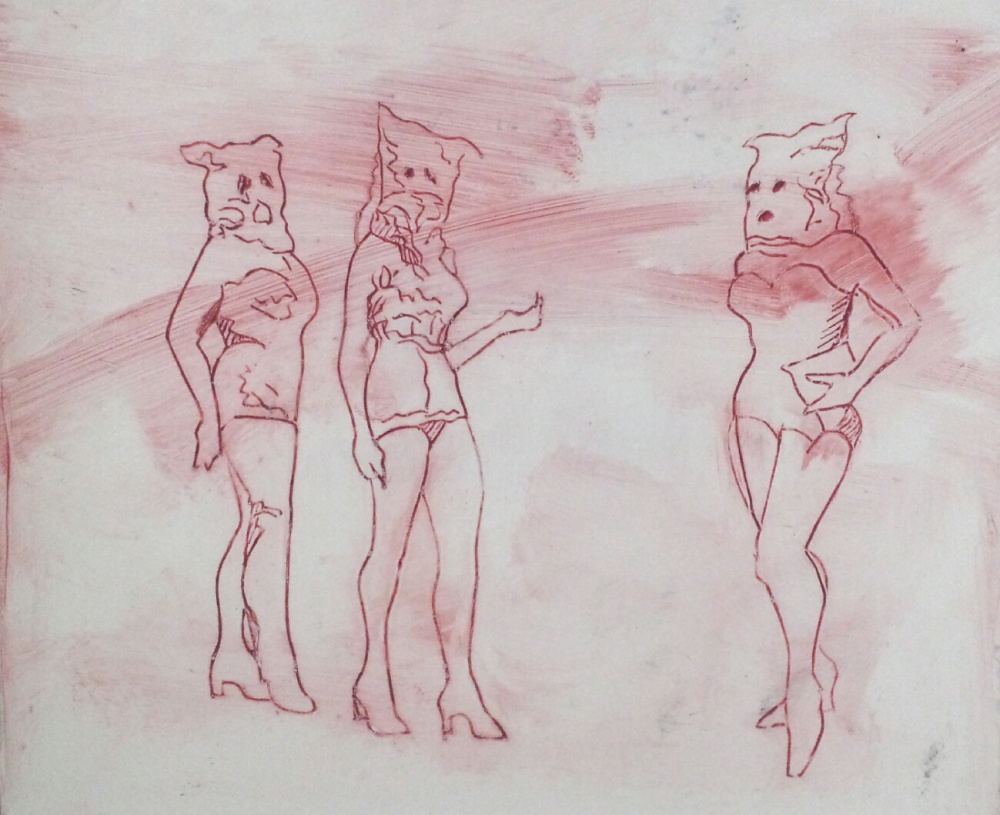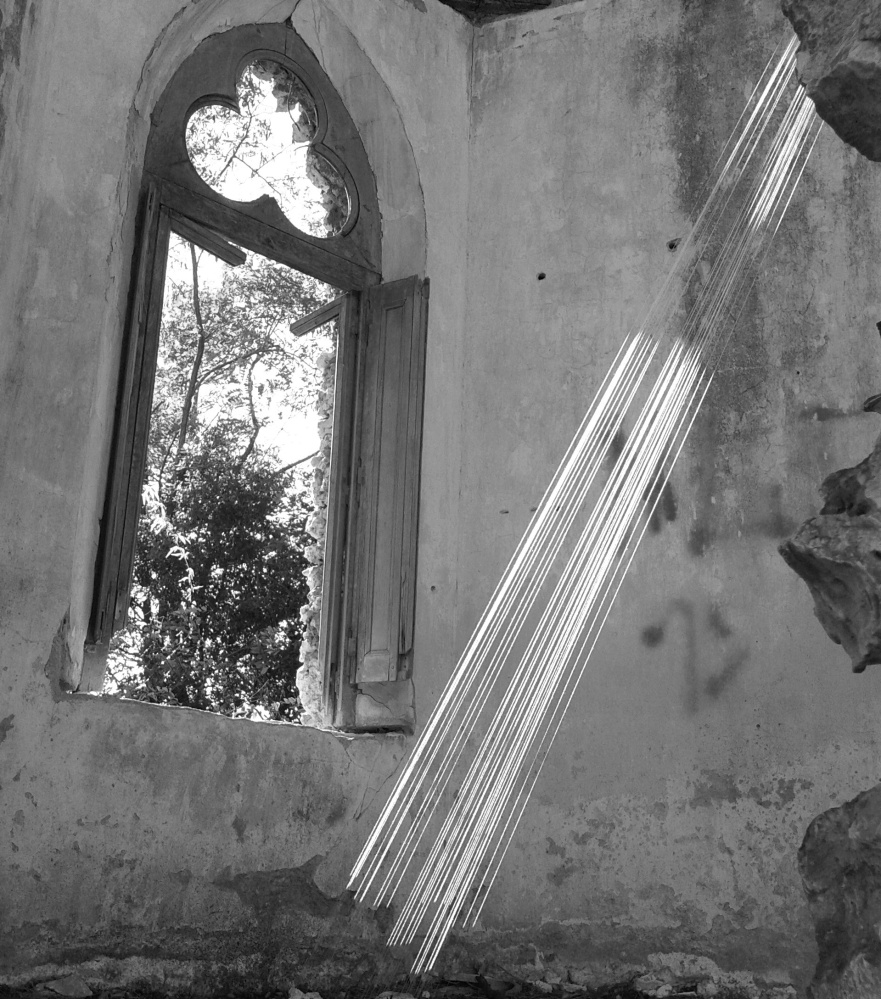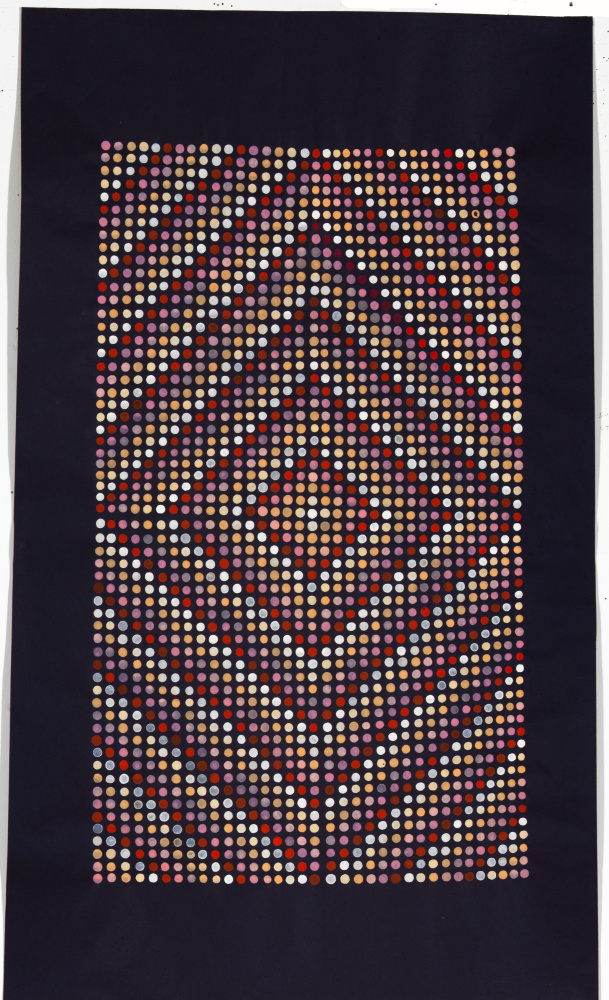Curated by Deb Whitney, “Lines of Thought” furthers the case that the Union of Maine Visual Artists’ gallery at the Community Television Network is a significant exhibition presence in Portland.
“Lines of Thought” is a drawing show geared toward the conceptual and content aspects of drawing as a form among Maine’s artist community. This has been a meaningful approach internationally for the past two decades, but it has particular relevance now with the blossoming role of contemporary art in Maine.
Whitney is an ideal organizer for such an exhibition. She was the director and curator of the erstwhile gallery Whitney Art Works, one of Maine’s historically best – and most missed – contemporary venues.
Moreover, Whitney has led a drawing group in London during the past few years, and so she not only has abilities, experience and insight, but also perspective from across the pond.
Whitney has included her own work in the show. While this is a curatorially questionable practice in the tricky streets of Brooklyn and Chelsea, it feels like the appropriate thing to do for the Union of Maine Visual Artists. The UMVA, after all, is an artist group. (Disclosure: I am not a member – I am not an active artist – but I am an editor of the “Maine Arts Journal: UMVA Quarterly.”)
As well, Whitney’s own work provides more perspective than a typical curator’s statement. Her three “drawings” are wooden panels covered with neutral encaustic (an ancient painting medium of mostly wax mixed with resin). These drawings were executed by incising the wax with a stylus and then rubbing red oil paint into the incised lines.
Aside from her open mind on medium, Whitney’s images of women look like advertisements for 1960s/’70s-style one-piece bathing suits – except these models have bags over their heads and red paint smears out over the lines. The tone and look echo Philip Guston’s enigmatic flavor.
The works have a sort of unfocused power and violence, not unlike a smoking sawed-off shotgun.
So, yes, the addition of Whitney’s own work is a powerful and positive addition to “Lines of Thought.”
Another of Whitney’s gestures ups the poignancy of the show by not saying too much. The works are numbered rather than labeled. And the exhibition checklist only states the names of the artists, so we don’t get caught up in mediums, titles, years and specifics of the works.
We have to take the works as they present themselves. This bit of a challenge fully services the theme of the show, which is geared toward hailing the artists’ intentions, their thinking.
The benefit is apparent with works like Ron Howard’s sketches that appear to be of the round Hilton towers in South Portland. The lack of clarity about this, however, and the notes within the images, push us to see the thinking in the drawings for ourselves.
The range of works within “Lines of Thought” is vast, from the Zen reductiveness of James Chutes’ few – and philosophically elegant – lines to the eye-stretching technical skill of Susan Cooney’s Magritte-like evening landscape of silhouetted trees on the ocean’s edge. From there, “Lines of Thought” pushes out in all directions.
Works tend to stand out from “Lines of Thought” by being intriguing rather than simply skillful or attractive. Alex Rheault’s pair of surreal images, for example, look like a dream visit to Freud’s kitchen junk drawer.
Yet they are beautifully executed and never surrender their luscious edge. Kenny Cole’s nine panels comprise a slider game grid of rather jumbled reporting about the Moken “sea gypsies” – whose plight cynically matches the slider game logic of the nine panels. Cole numbers the out-of-order panels to hint at his game, but it’s a false solution, and we are challenged to pursue the narrative on our own, elsewhere in our lives.
Avy Claire’s smaller of two pieces pushes the game theory approach from a similar starting point as Cole, but instead of Cole’s context of social critique, Claire follows a path of needle and thread to interweave the subjectivity of the artist and viewer: Claire’s game-like steps forward are matched by the viewer’s parsing her piece at a pace that uncannily matches the rhythm of conversation.
Noriko Sakanishi’s drawings are a particularly welcome sight since she showed with June Fitzpatrick, whose nearby gallery recently closed. Working on gridded paper, Sakanishi’s pencil works balance geometrical intelligence with hard-edge formal rigor and a meditatively even, textile sensibility.
Ellen Hodgkin’s time-marking grids move toward the miniscule by means of great numbers that surpass our ability to estimate, let alone count. With her well-worked surfaces and many, many marks, she attains both a visual and a conceptual richness.
Grace DeGennaro’s work, on the other hand, looks to woven flatness through gridded shapes of dots. Instead of folding into fabric, however, DeGennaro’s stay upright in their patterns on the wall like mandalas or other meditative objects, but with a thoroughly Western and rationalist stance and the elegance of post-war American abstraction.
While there are a few weak points – and there are only a few despite Whitney’s leaving the curatorial door open to all UMVA submitters – the rest of the work is similarly strong to what has been discussed here. The largest presence, however, are the erosion drawings of Krissane Baker.
Baker’s works are essentially geometrical drawings on paper made with many staples that were then allowed to rust and spread their orangey oxidization like wet-paper watercolors with oddly organic complexity. Most striking is a torn and frayed horizontal scroll about 20 feet long that electrifies the UMVA Gallery’s interior space. Put up with T-pins, the fragmented work has a post mortem feel, like it has been laid out for forensic examination.
The only interrupting trouble with “Lines of Thought” is that the space feels like a borrowed office space instead of a gallery. (The clearing out of the front space makes this problem appear worse, although it may be the first steps in a welcome improvement if that space is being repurposed for visual art.)
Considering the community-mindedness of both CTN and the UMVA, this is hardly out of tune with their missions. However, it is easy to imagine that this show could have graced the walls of the visually sleek Whitney Art Works, and what a difference that would make for elegantly quiet works like Kate Beck’s, DeGennaro’s and Claire’s, or even the physically refined works like Baker’s, Whitney’s and, in particular, Christopher Pennock’s wooden-boxed aphoristic word blocks.
UMVA is next door to the Institute for Contemporary Art, and I railed against the Maine College of Art’s choice to use guest curators for the ICA’s shows. (My point was that a young, brainy and highly visible curator like Daniel Fuller not only does the work but represents a massive marketing benefit for the school.) At first, I, unfortunately, felt justified in my concerns.
But the ICA’s most recent (and emotionally difficult) show is beautiful and sizzles conceptually. Similarly, the UMVA’s multi-voiced approach seems to be finding its mark. (Apparently, this is a thing now in Portland. Even Able Baker Contemporary is using outside curators.)
If you are looking for high-stepping, high-ceilinged elegance, you will be disappointed. But if you want a brainy and exciting cross-section of contemporary art in Maine, you will find it at “Lines of Thought.”
Freelance writer Daniel Kany is an art historian who lives in Cumberland. He can be contacted at:
dankany@gmail.com
Send questions/comments to the editors.





Comments are no longer available on this story